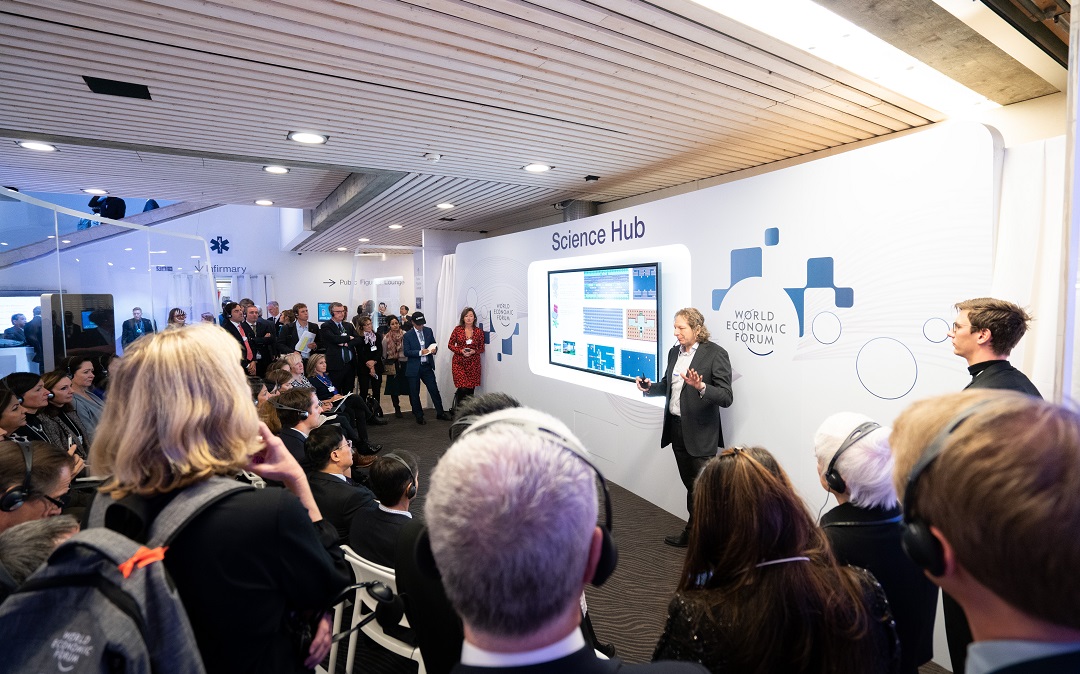An employee development plan is a helpful tool to assist employees in their personal and professional career growth. An employee development plan with clear action steps can help improve their abilities and progress in their career.
Empowering your current employees with effective tools, such as the HIGH5 strengths assessment, can propel your organization to new heights. A Gallup study revealed that organizations investing in employee development see an 11% profit increase and double their retention rates. By incorporating strengths-based approaches like HIGH5, companies can tailor development plans to each employee’s unique talents, maximizing both individual growth and organizational success.
However, an employee development plan should not be created without proper planning. In this article, you will learn about the key elements and advantages of creating a career development plan. We will also cover how to design an employee development plan and the different types of employee development plans.
What is an Employee Development Plan?
Training and development, employee development, and career development are common terminologies used interchangeably in the Human Resources field. However, these terms are different from one another.
An employee development plan is also known as the employee growth plan. An employee development program is a long-term development action plan used by the employee and their reporting manager.
This plan helps employees to improve their existing work capabilities and acquire new knowledge, tools, or skills to perform better in the workplace. The individual employee development plan is different from a personal development plan.

Personal development plans are often held exclusively by the individual and supported by the organization as needed. They tend to be more focused on the employee’s personal goals than professional goals.
Take note that different employees may have different development needs. It relies on each individual’s specific talents and passions, as well as the needs of the organization. This implies that you cannot simply reuse the same development plan ideas for everyone within your organization. To identify team member’s talents recommend them to take a talent test which helps you align their strengths with company goals.
Employee development plans, when well executed, can be used as a method to enhance the workforce’s skills and capabilities. They can also produce tangible ROI and increase organizational performance.
15 Benefits and Reasons Why Employee Development Plans are Critically Important
A well-planned employee development plan is critical at any level within the organization. When done well, it may provide significant benefits to all parties involved, such as employees, HR managers, and the organization as a whole.
Employee feedback development plans help to address future business requirements and succession planning. Having well-thought-out employee development programs is essential to ensure employee retention, employee satisfaction, future leader development, and improved workplace engagement.
The 15 benefits that carefully constructed employee development programs bring to the workplace are as follows:
- Assists in attracting talented applicants with the best talent potential.
- Boosts employee development plan ideas, and motivation in the workplace.
- Improves employees’ performance in their role. In the long run, it can help the organization to meet or outperform the organization’s competitors.
- Improves the organizations’ top-line and bottom-line productivity and profitability.
- Nurtures promotable employees into great leaders for the organization.
- Saves the cost and time required to hire external applicants via retaining existing employees.
- Helps the organization to plan for the future. It ensures that the workforce is well-equipped with the necessary skills and knowledge to compete at the highest level.
- Can deal with unforeseen events better, especially in a constantly changing business environment.
- Helps organizations to develop a continuous learning and development culture within the organization.
- Allows organizations to develop, innovate, and compete more effectively within their sector.
- Empowers employees to reach their highest potential by helping them identify their strengths and areas for development. The HIGH5 strengths assessment plays a crucial role in this process, providing a comprehensive analysis of an individual’s top five strengths. By understanding their unique talents, employees can focus on leveraging these strengths in their roles, leading to increased engagement, productivity, and job satisfaction. This strengths-based approach ensures that development plans are tailored to each employee’s natural abilities, accelerating their growth and contribution to the organization.
- Helps organizations to fight off stagnation among the employees. It can help employees to bring in fresh new ideas to innovate and compete with other competitors consistently.
- Make sure that all employees are always up-to-date with the most recent developments in the industry. This will give the organization a competitive advantage over others.
- Promotes cross-departmental collaboration and creates a tightly knitted group of employees.
- Ensures that employees are equipped with a skill set that includes both hard and soft skills.
Pro Tip From HIGH5
Leverage the HIGH5 strengths assessment results to create personalized development plans. Encourage employees to focus on projects and tasks that align with their top strengths, while also providing opportunities to develop complementary skills that enhance their primary talents.
5 Steps to Create a Perfect Employee Development Plan
To be successful in creating a perfect employee development plan it’s important to follow some guidelines and steps that will provide the best possible execution of employee goals.
By being this said here is an example of 5 steps guide in creating a perfect employee growth plan:
Step 1: Evaluate and determine the employee’s and the organization’s goals.
First consider where the organization is today and where it will be in 3 -5 years down the road. Think about the business goals and the opportunities and obstacles that it may face.
Spend some time thinking about how to develop and improve the workforce to achieve the business goals? Remember that it’s the collective power of the people that will move the organization’s business forward.
The organization must devote time to communicate and develop employees as a way to encourage and empower them. An effective employee development plan should strive to provide opportunities aligned with the employees’ individual goals.
By listening to the employees’ development requirements, the organization can match the employees’ needs with its goals. This would also create an engagement with the employees, making them feel valued and keep them interested in their work.
Before meeting with employees to discuss their development objectives, organizations should establish challenging yet achievable business goals. Integrating the HIGH5 strengths assessment at this stage can be transformative. By understanding the collective strengths of your workforce through HIGH5, you can align business goals with your team’s natural talents. This approach not only makes the goals more attainable but also ensures that employees are engaged and motivated, as they’re working in areas where they naturally excel. The HIGH5 assessment provides a solid foundation for creating development plans that are both personally fulfilling for employees and strategically beneficial for the organization.
Once the business goals are identified, the organization can develop the expertise, knowledge, and competencies required to achieve those goals.
Step 2: Devise an action plan
It is crucial to consider each employee’s unique motivation concerning their professional career goals. Therefore, a manager should first schedule a one-to-one session with their employees to review their development plan. In the session, discuss what they love about the job and what challenges they are facing.
Use this opportunity to find out what disinterests them and what is their career aspiration too. Employees should be held responsible for following through on their development plan.
Organizations can provide them with the necessary tools, resources, and training opportunities to develop themselves. A manager’s role is to guide and support their employees along their career development journey.
Ask probing questions to get the employees to share more about their career goals. Again, tailoring the comprehensive employee development plan to each employee experience is critical. If they are not receptive to the development plan, they will most likely not give their 100% effort.
Remember the 70/20/10 rule: 70% of learning comes from on-the-job experience, 20% from those around you, and 10% through courses, seminars, and training. Make sure to set short-, medium- and long-term goals when developing an employee development plan.
Short-term goals: Set realistic goals that can be achieved in the next couple of weeks to a month. These goals should be achievable, with slight changes to their current job responsibilities.
Mid-term goals: Discuss with your employees what realistic and feasible goals they can achieve in the next six months. Ask them what actions they believe they need to take to attain these goals. Then, provide them with resources and tools that might be helpful. Make sure that these goals are realistic and attainable.
Long-term goals: Identify goals that can be accomplished in a year or more. Speak with the employees about where they see themselves in a year with the organization. Probe about the actions they have to undertake to achieve their goal. Then give them the resources and any helpful tips that can help them to reach their goal. Don’t forget to inspire them to chase after their aspirations!
Step 3: Consider the skills and training needed to achieve those goals
Creating an employee development plan is an excellent way to understand the employees’ current needs and the necessary skills to reach their goals. It is a wise decision to spend time developing the organization’s existing employees.
This kind of plan can help bridge the skill gap between the present employee’s skill set and the skills required for the future. The time and effort spent recruiting, onboarding, and training a brand-new employee may also be avoided.
Once the necessary skills have been identified, organizations can determine how to help the employees to reach their goals. Consider training opportunities such as coaching, mentorship, cross-training, job shadowing, or succession planning.
Organizations can also take advantage of online resources, such as podcasts, forums, etc., to train the employees. For example, what if a few employees are interested in attending various skill training classes but lack time to attend these classes? Organizations can consider subscribing to an online learning platform subscription.
An online platform allows the employees to gain shared access to the platform and complete courses anytime and anywhere.
Step 4: Check-in with employees and solicit feedback regularly
Conduct regular one-on-one employee development meetings to check in with the employees. This kind of meeting is essential as it helps the organization to evaluate the employees’ development progress.
This kind of meeting is also an excellent opportunity to discuss what’s next for them and recognize and reward their achievement. Use this session to address any challenges they encounter while working towards their current goals too.
During the one-on-one session, it is also good to consider whether new industry trends have emerged or if the employees’ job requirements have changed since the previous meeting.

Employee development plans, like everything else, can evolve or change at any time. Remember, employee development plans are not cast in stone! Make it compulsory to have at least a brief and informal check-in with the employees even if no modifications are required to adjust the development plan or the plan is progressing smoothly.
These regular check-ins will promote effective communication between the manager and the employees. Think about if new opportunities have surfaced or if any of your employees’ needs or goals have changed since you last met.
Like everything else in the business world, employee development plans can also change and evolve with time. Nothing is set in stone!
Step 5: Keep looking for growth opportunities
It does not mean that the organization can sit back and relax, waiting for the result after creating the employee development plan ideas. Organizations should continuously encourage employees to seek career growth opportunities.
Besides in-house training, organizations may consider sending employees to attend external training programs. Attending external training may help employees to discover different skills and expertise that would be beneficial for their work and organization.
Make sure the manager and employee are open to changing the goals and action plans in the employee development plan. By doing so, it allows them to amend or include any new growth opportunities that they discovered in the employee development plan.
Examples of Employee Development Plan
Sarah, a junior employee who has been with the company for several years, feels ready for the next step in her career.
She plans to apply or to be promoted to a team leader role in a year. After discussing with her team leader, they agreed to find opportunities to develop her leadership skills. Her team leader suggests she takes the lead in mentoring and coaching their company’s new joiners. During this period, Sarah’s team lead provides her with tips and advice on improving her mentoring and coaching skills.
John has excellent verbal and written communication skills.
He knows almost everyone in the company and is known for his friendliness. Being aware of his strengths, his company assigned him a task to break down silos between two key departments within the company. He is tasked to help the two departments to come up with different ways to collaborate more effectively.
Tina is currently the team lead of a newly formed department of the organization.
She is invited to attend conferences and webinars related to her new work. Throughout the events, Tina gains exposure to the new and latest trends within her field of work. She decides to introduce some of the new ideas and findings she learned to steer her new department ahead. She also gets to network with the experts in the industry who provided her with valuable advice.
Pro Tip From HIGH5
When creating development plans for aspiring leaders, use the HIGH5 assessment to identify strengths that naturally align with leadership qualities. This approach allows you to create more effective, personalized leadership development programs that build on each individual’s innate talents.
Types of Employee Development Plans
The list of 7 employee development plan types are:
- Performance-based plan
- Management by objectives
- Succession planning
- Ad-hoc improvement
- Continuing education courses
- Increased duties and responsibilities
- Professional organizations and conference participation
Performance-based plan
This strategy is based on the logic of a grade school report card. Imagine students who gave their best effort and time to study hard and achieve straight A’s in their end-of-year examination.
Or, at the very least, students study to obtain satisfactory grades that meet the minimum passing score. Similarly, in the workplace, employees will give their best when they have a goal to hit, such as their key performance indicators (KPIs).
These goals or KPIs can be a monthly, quarterly, or annually target that they agreed with their direct supervisor.
Management by objectives
This employee design development plan focuses on shorter-term goals. Employees are empowered to create their own goals rather than accepting goals from the management.
These personalized goals then work together to achieve the bigger organizational goals. This current employee development plan adopts a more proactive rather than reactive approach.
Employees are allowed to adjust their goals flexibly as time passes and when necessary. Furthermore, the goals they created are not based on their past performance evaluation.
This plan allows employees to track their development progress and improve their performance.
Succession planning
Most organizations have formal career ladders and career paths put in place for different roles. Employees who meet the specific requirements are entitled to advance to higher-level positions.
This strategy is called succession planning, another type of employee development plan template. In comparison with the management by objectives plan, this plan focuses on the long term.
It is also highly suitable for mentoring programs, whether cross-departmental or with individuals a few levels up the same career ladder. A mentorship program is a valuable development tool for both the mentor and the mentee.
Mentors are generally more advanced in their professions. They possess deep industry knowledge and can share advice on how they got to where they are.
Ad-hoc improvement
This strategy is personalized and best suited with one employee rather than in groups. This development plan is built on a mentorship program similar to succession planning.
However, this plan places a greater emphasis on the specific needs of the mentee. Timing is critical for this kind of employee learning development plan. When employees show their enthusiasm to learn a particular skill, it is crucial to respond quickly.
They may lose their interest to learn if they wait for too long. This approach is less formal as compared to the other type of development plans. But, it is ideal for individuals who want to hone a particular skill to help them progress in their careers.
Continuing education courses
This development plan may suit employees who want to continue study or obtain a specific certification.
Organizations can introduce tuition reimbursement as part of the employee development plan. Employee performance benefits such as this can encourage employees to continue to upskill themselves and make them feel valued.
Professional organizations and conference participation
This development plan may include attending conferences and seminars or managing events organized by the organization.
Such events can provide experienced employees with a platform to network and be more involved in the organization’s business and industry.
Key Elements to Establish Employee Development Plan
Let’s go through the main components that every popular employee development plan should have. These components will provide each plan with the necessary framework to meet the needs of every employee.
Organizational needs: What are the organization’s requirements? What are its advantages and disadvantages? What skillsets and expertise are required to remain competitive in the industry?
Employee competence: What are the employee’s strengths? How can they take advantage of their talents to benefit the team and the organization? How might these outcomes help them to advance in their career?
Employee passion & employee motivation: What are the employee’s desires and aspirations? What do they like and dislike doing in their job role? How might their career aspirations be more closely aligned with their capabilities and the goals of the organization?
Employee response & employee turnover: How to measure the effectiveness of each meaningful employee development plan? Are the employees fully engaged with the development opportunities provided? How often should organizations measure employees’ development progress?
Employee Development Plan FAQ
What Should be Included in an Employee Development Plan?
An employee development plan ideas should include short, medium and long-term goals. It should take into consideration both the employee’s personal goals and the organizational goals. The plan must also have a specific guide or action plan that the employee can refer to at any time.
How do you write an Individual Development Plan for Employees?
To start writing an individual development plan, you need to identify your employees and the organization’s goals first. Next, devise an action plan with your employees and consider the skills and training necessary to achieve those goals. Make sure to check in with your employees and solicit feedback regularly. Lastly, keep looking for growth opportunities within or outside the organization.
Overall Conclusion Of Employee Development Plan
Employee development programs serve as a crucial blueprint for employees and organizations. This type of plan helps learn how employees feel in their current role and where they want to be in the future. Creating tailored employee goals may help make your employees more productive and motivated in the workplace (confirmed in our research). When your talented employees are happy, you are more likely to retain them in your organization.







